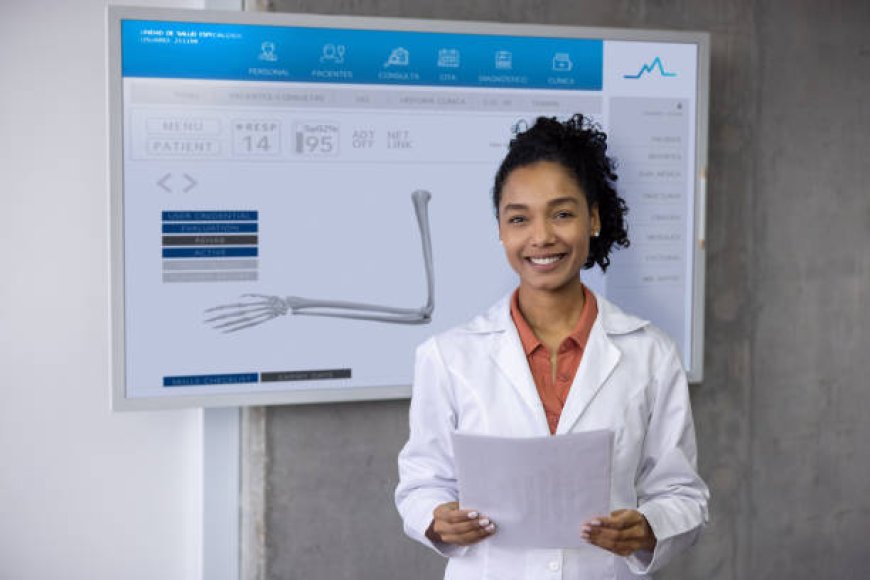AI in Radiology: From Image Recognition to Diagnosis

Artificial intelligence has become a huge part of our lives because now we are using it everywhere and for everything. AI can do so many things and now it's becoming uncountable. That’s why it is used in various industries. It helps in growing and making an industry successful and people have seen positive effects too. Just like AI has helped a lot in healthcare industries too. Well, we know it might sound weird because how can AI be useful for healthcare if it cannot treat patients? Yes, it cannot treat patients but it helps a lot in treatment planning and diagnosing patients. AI has made effective changes in radiology, where imaging is used to diagnose and treat diseases. Radiology has become so much better faster and more accurate with the help of AI. AI has transformed radiology from simple image recognition to helping diagnose complex problems.
The Role of Radiology in Modern Medicine
Many scans help medical professionals diagnose diseases because scans like PET help in looking inside the body and finding the root cause of diseases. Radiologists take the responsibility to analyze these images, and generally, they do it manually and identify abnormalities. However, this process was no doubt effective but also time-consuming. As humans were performing it, there were chances of errors as well, especially if the doctors were very busy or the problem was hard to see.
The Emergence of AI in Radiology
Generative AI in healthcare, especially in the radiology department, has completely changed the process of diagnosis and made it even better. Machine learning and deep learning have worked and have given powerful tools for automating and improving radiological practices. AI systems are trained properly so that medical professionals get correct datasets and huge medical images for better diagnoses. Over time, AI has become useful for solving complex diagnostic workflows and making things easier for doctors.
Image Recognition: The Foundation
The first thing with which AI helped in the radiology department was image recognition.
The first major application of AI in radiology was image recognition. This means it helped in teaching computer programs or algorithms that spot important details in medical scans—like small lumps in a lung CT scan or tiny calcium spots in a mammogram.
AI uses a special type of model called Convolutional Neural Networks which is a deep learning model. You can think of this model a bit like the way our brains process what we see. Basically, it helps in classifying, labeling, and finding unusual things in the images very accurately. And the best part about this model is it can even perform better than human doctors in certain cases. For example, AI can be used to detect
-
Lung cancer nodules in chest CTs
-
Fractures in X-rays
-
Brain hemorrhages in head CTs
-
Breast cancer in mammograms
Beyond Recognition: Assisting in Diagnosis
AI has brought so many changes to the medical field that now it can do almost everything. AI can recognize images and helps in understanding a patient's medical background gives advice on possible diagnoses and helps doctors focus on the most urgent cases first.
We know AI is fast and now it can easily scan body images; it quickly helps with diagnosis and treatment. For example, if there is a brain bleed in a CT scan, AI can quickly spot it, which leads to a quick doctor visit and helps the patient get treatment faster. We know this feature of AI but another best thing is it also compares new scans with older ones to see if a disease is getting better or worse.
Benefits of AI in Radiology
Now that you know how AI is changing the radiology department in healthcare, you should know other benefits of radiology as well.
Increased Accuracy
Humans are efficient but sometimes humans might also make mistakes in diagnosis, especially in early-stage diseases AI can reduce these diagnostic errors and provide accurate results.
Efficiency and Speed
Doctors take time to study and analyze images but with AI systems, radiologists can be free of burdens because they quickly process and analyze images, saving time and workload for radiologists.
Triage and Prioritization
AI is smart enough to understand and identify urgent cases, which it pushes to the top of the reading lists, making sure patients who need medical attention first get it.
Conclusion
AI in healthcare and especially in radiology has made various changes that have transformed the work culture in the healthcare industry. Medical professionals like radiologists are using AI tools to get accurate and speedy results from medical imaging. AI makes sure that every patient has the right diagnosis because it makes no mistakes and leads patients to early treatment.







